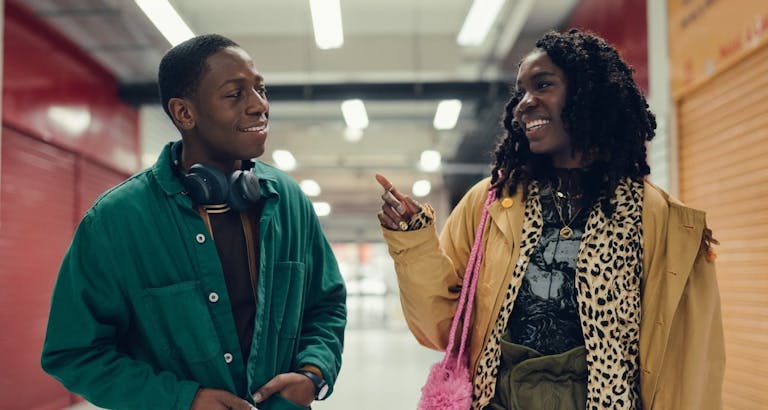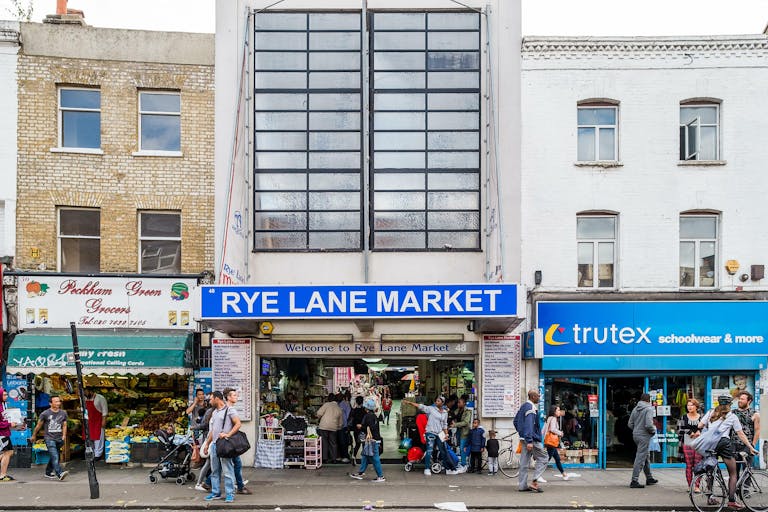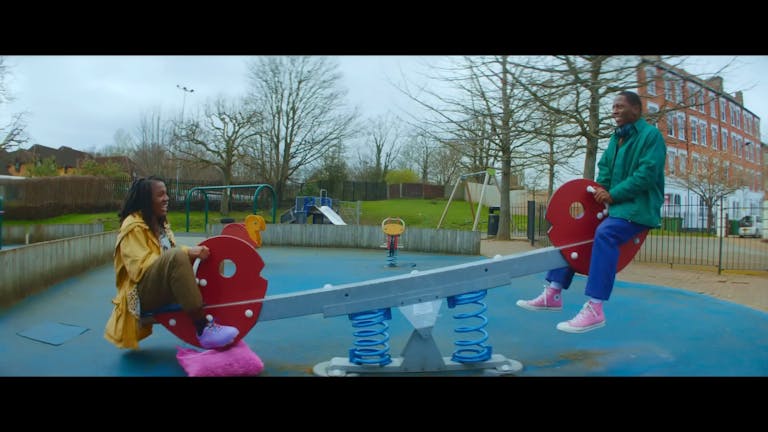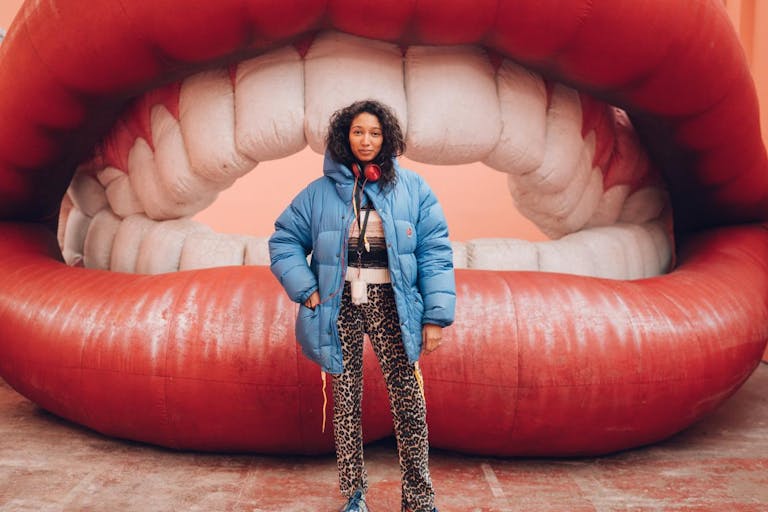Rye Lane is a fast, funny romcom set primarily around the eponymous lively thoroughfare in Peckham, south London. It begins with a not-quite-meet-cute in the unisex public toilet of an art gallery, where twentysomething accountant Dom (David Jonsson) is crying in a cubicle over his ex-girlfriend, who cheated on him with his best friend Eric (Benjamin Sarpong-Broni). Livewire Yas (Vivian Oparah) overhears this and offers solace, only to be rebuffed. The pair soon meet in the gallery proper at their mutual friend’s exhibition and wander out into Rye Lane, before a wild day sees them explore Peckham and nearby Brixton as friendship and maybe love blossoms.
Shot entirely on location in south London over 22 full days in spring 2021 (with four to five days of pickups later), Rye Lane is directed by feature debutant Raine Allen-Miller. Allen-Miller had planned to write her own first feature but changed her mind when producer Damian Jones sent her Nathan Bryon and Tom Melia’s Rye Lane script. She was on a Eurostar at the time and “ended up laughing out loud and embarrassing myself in front of everyone”.
Allen-Miller sat down for a Zoom call while she was in Park City, Utah on the eve of the film’s world premiere at Sundance Film Festival, where the talking points included her love of TV comedy series Peep Show and her mixed feelings on romcoms.

Why did you decide to move the story from Camden to south London?
I never really had that much passion for Camden. I didn’t grow up there. I used to go to get Sonic Youth t-shirts. I moved to London from Manchester when I was 12 and lived in Brixton with my dad. I’d go into Nour Cash and Carry – which is in the film – with my grandma and we’d get jerk. Then I went to Camberwell Art College and lived in Peckham. I have such a strong connection with both places; I really wanted to write a love letter to south London. I hear people say it and I’m always like, “It’s cheesy” – but it’s true, south London is a third character in the film. It was really a no-brainer: “I’m going to do this and it’s going to be in the ends.”
How did you know Vivian and David were the right people for the lead roles?
One of the biggest things with acting and comedy for me is that I much prefer people that don’t play funny and can actually do super-straight but have funny bones. They both nailed that. They need to feel like real people, people that you’d know in south London. They’re just silly together, taking the mick out of each other the whole time.
The dialogue has a real feeling of truth to it. Was that in the script or did you have to do much improvising?
It was a really strong script, but the actors were brilliant at elevating it. I like giving people freedom to go, “I don’t think the character would say this.” Our first rehearsal was funny, because we were in this rehearsal room and, because of COVID, they had to be really far apart. So, we went for a walk in Peckham, and I videoed them on my iPhone.
They definitely followed the script, but the one person I will point out who I think improvised a lot was Benjamin Sarpong-Broni, who plays Eric. His continuity was so off because he was doing so many different things. It was great. I was like, “Do it. Do more.”
Was it all shot on location?
Production designer Anna Rhodes and I were like, “Everything has to be in south London. Let’s try and support all our businesses.” That was important for us, to celebrate places.
On screen we see Rye Lane and the area surrounding the train station. In Brixton, you have Atlantic Road, the market and Brockwell Park as well. Is the pub The Half Moon or The Regent?
It was The Regent. I wanted to shoot that in The Effra Tavern, I love it so much. That was my local pub. Me and my dad would go there all the time, but they were like, “We want you to give us four grand, and we are not going to sign anything.” I was so angry about that. The Regent is nice, but The Effra Tavern had to be there. It’s such a classic Brixton pub, and it’s Jamaican. I wanted to support that.

What was the most difficult thing about the shoot?
COVID. We wanted people in the background, and I wanted to shoot on really wide lenses, but having one person in a mask going by kills the shot. We can’t afford to digitally give everyone a beard – we have done that on a few shots. But the pandemic also made it a special thing where we all were quite close and felt lucky to be shooting and working at that time.
Were there any other films that you used as reference points?
Roy Andersson films. I love shots that are almost static and composed and playing to the frame. His work really inspires me. He can do something that looks amazing but is also very funny. That’s something that I’m really interested in: making the filmmaking emphasise the comedy. Andersson is a massive inspiration, but that’s probably more his instincts and his tone.
Another influence is Peep Show. They have that thing where his eye-line is slightly above the lens. I ended up saying to the DP, “I want to do a Peep Show shot, which is basically close on a wide lens, but they can’t look straight down the barrel, otherwise that breaks the fourth wall. We need to be in their heads.” That was a huge tonal reference for me.
It’s a hard one stylistically because there’s obviously directors that have amazing style – like Spike Lee. I think some people might say that there’s similarities there, but he’s New Yorky; this isn’t. His framing and colour is always so beautiful and brilliant.
Are you a fan of romcoms generally?
It’s so funny because I actually hate that it’s a romcom, but it is. I went into making Rye Lane hoping it would not quite be a typical romcom. I love the film Juno (2007). I always felt like, “This is a romcom, but it’s cool and it’s got more to it.” It’s not like those posters where it’s back to back, someone holding a funny prop. I just didn’t want that vibe. It’s not me at all.
This article is by Lou Thomas and was originally published on www.bfi.org.uk.


